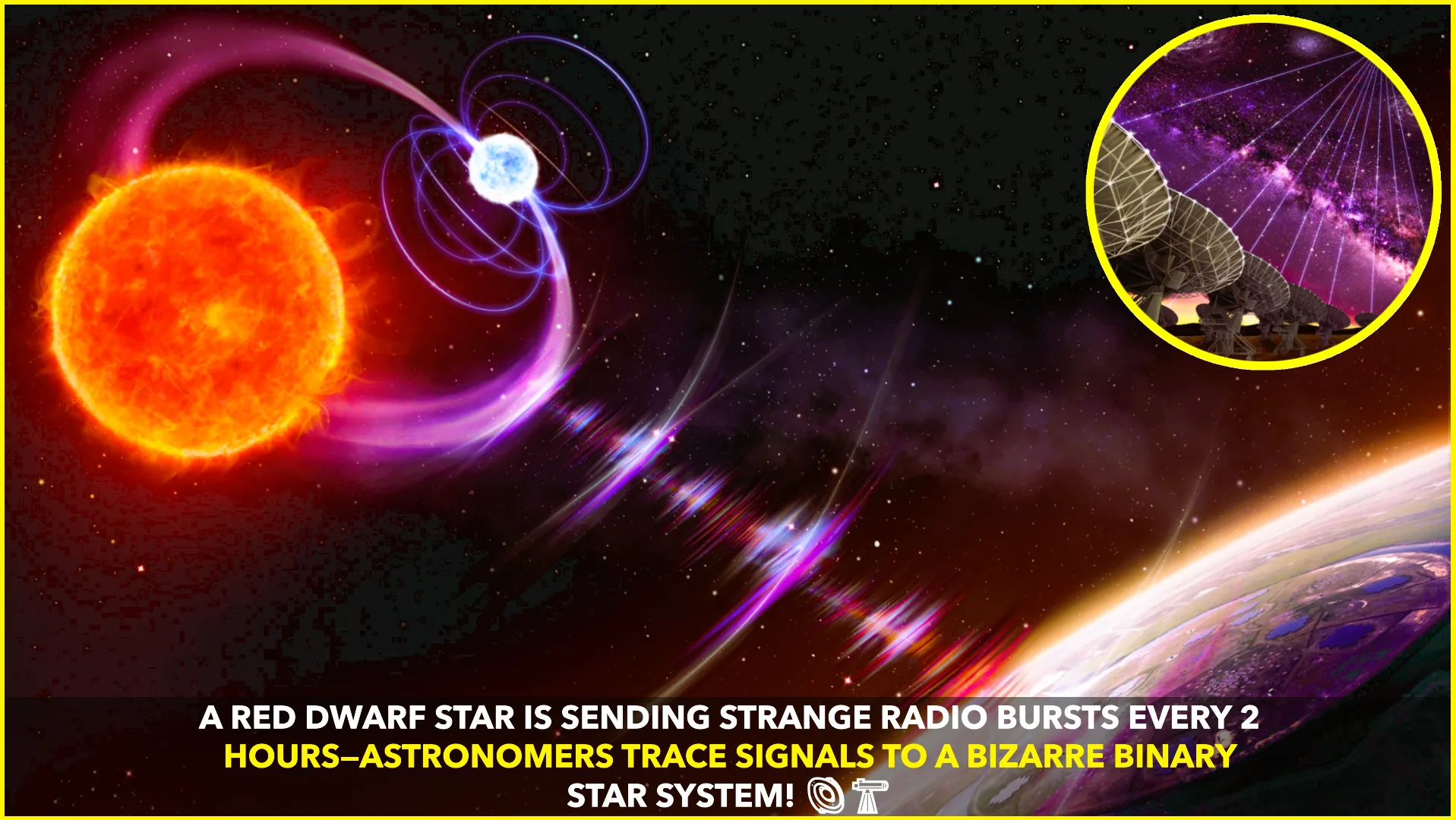Astronomers have recently unveiled a groundbreaking discovery: a binary star system emitting mysterious, repeating radio bursts. This system, designated ILT J1101+5521 (ILTJ1101), comprises a red dwarf and a white dwarf orbiting each other every 125.5 minutes. The radio signals, lasting between 30 to 90 seconds, recur with the same periodicity, challenging previous assumptions about their origins.
A Decade-Long Mystery Resolved
The enigmatic radio pulses were first detected in 2015 within archival data from the Low-Frequency Array (LOFAR) radio telescope. However, their source remained unidentified for nearly a decade. Dr. Iris de Ruiter, during her doctoral research at the University of Amsterdam and now a postdoctoral researcher at the University of Sydney, developed a novel method to search for such radio pulses. Her meticulous analysis led to the identification of multiple pulses emanating from ILTJ1101. Subsequent observations using optical and X-ray telescopes confirmed that these pulses originated from a binary system consisting of a red dwarf and a white dwarf located approximately 1,600 light-years away in the Ursa Major constellation .
Magnetic Interactions: The Pulse Generator
The prevailing hypothesis suggests that the radio emissions result from the interaction between the magnetic fields of the two stars. As the red dwarf emits a stellar wind composed of charged particles, these particles collide with the white dwarf’s intense magnetic field. This interaction accelerates the particles, producing the observed radio bursts. This mechanism is analogous to the auroras on Earth, where solar wind interacts with our planet’s magnetic field to create luminous displays .www.ndtv.com
Redefining Stellar Radio Emissions
Prior to this discovery, such long-period radio transients were primarily associated with neutron stars or magnetars. The identification of a white dwarf binary system as the source of these emissions challenges this notion, indicating that white dwarfs can also produce similar radio pulses. This revelation broadens the understanding of stellar remnants and their capabilities, suggesting that the mechanisms behind such emissions are more diverse than previously thought.
Future Research Directions
The discovery of ILTJ1101 opens new avenues for astrophysical research. Astronomers plan to conduct further studies, particularly focusing on the system’s ultraviolet emissions, to glean more information about the temperature and history of the white dwarf. Additionally, researchers are delving into archival data from radio telescopes like LOFAR to identify other similar systems, aiming to understand the prevalence and characteristics of such binary systems in our galaxy .
This finding not only solves a longstanding cosmic mystery but also underscores the importance of continuous observation and analysis in unraveling the complexities of our universe.










